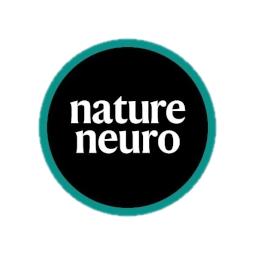- Venkatraman, R.. You're 96 Percent Less Creative
Than You Were as a Child. Here's How to Reverse That. Inc.com.
https://www.inc.com/rohini-venkatraman/4-ways-to-get-back-creativity-you-had-as-a-kid.html
- Kerley, J. Creative Inventive Design and Research.
https://ntrs.nasa.gov/api/citations/19940029213/downloads/19940029213.pdf
-
Robinson, K. “Do Schools Kill Creativity?”.
https://www.youtube.com/watch?v=iG9CE55wbtY
- Uable, 28 August 2023. “The end of education.”
https://medium.com/@connect_75384/the-end-of-education-94f3a39fe97c
- Church, D., Yang, A., Fannin, J., & Blickheuser, K. (2022).
The biological dimensions of transcendent states: A randomized controlled trial. Frontiers in Psychology, 13,
928123.
https://doi.org/10.3389/fpsyg.2022.928123
- Herrmann, C. S., Strüber, D., Helfrich, R. F., & Engel,
A. K. (2016). EEG oscillations: From correlation to causality. International Journal of Psychophysiology, 103,
12-21.
https://doi.org/10.1016/j.ijpsycho.2015.02.003
- Poe, G. R. (2017). Sleep Is for Forgetting. Journal of Neuroscience, 37(3), 464-473.
https://doi.org/10.1523/JNEUROSCI.0820-16.2017
- Crivelli-Decker, J., Hsieh, L.-T., Clarke, A., & Ranganath,
C. (Year). Theta oscillations promote temporal sequence learning. Neurobiology of Learning and Memory,
Volume Number(Page Numbers).
https://doi.org/10.1016/j.nlm.2018.05.001
- Zielinski, M. C., Tang, W., & Jadhav, S. P. (2020).
The role of replay and theta sequences in mediating hippocampal-prefrontal interactions
for memory and cognition. Hippocampus, 30(1), 60-72.
https://doi.org/10.1002/hipo.22821
- Henao, D., Navarrete, M., Valderrama, M., & Le Van Quyen, M. (2020).
Entrainment and synchronization of brain oscillations to auditory stimulations.
Neuroscience Research, 156, 271-278.
https://doi.org/10.1016/j.neures.2020.03.004
- Hanslmayr, S., Axmacher, N., & Inman, C. S. (2019).
Modulating human memory via entrainment of brain oscillations. Trends in Neurosciences,
42(7), 485-499.
https://doi.org/10.1016/j.tins.2019.04.004
- Michael, E., Santamaria Covarrubias, L., Leong, V., & Kourtzi,
Z. (2023). Learning at your brain's rhythm: individualized entrainment boosts learning for
perceptual decisions. Cerebral Cortex, 33(9), 5382-5394.
https://doi.org/10.1093/cercor/bhac426
- Trost, W., Frühholz, S., Schön, D., Labbé, C., Pichon, S.,
Grandjean, D., & Vuilleumier, P. (2014). Getting the beat: entrainment of brain activity by musical
rhythm and pleasantness. NeuroImage, 103, 55-64.
https://doi.org/10.1016/j.neuroimage.2014.09.009
- Trost, W. J., Labbé, C., & Grandjean, D. (2017).
Rhythmic entrainment as a musical affect induction mechanism. Neuropsychologia, 96,
96-110.
https://doi.org/10.1016/j.neuropsychologia.2017.01.004






